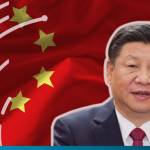Estimated reading time: 4 minutes
Last month, I found myself staying with a nomad family in a traditional yurt (‘ger’), 300km West of Ulaanbaatar, Mongolia, staring at the overwhelmingly star-filled night sky.
Far removed from the bustling trade centre of London, the fragmentation of our industry has never been more apparent.
From the vast steppes of Mongolia to the vibrant markets of Africa, and the under-the-radar ‘Stans’ of Central Asia, the reach of trade finance is truly global, creating critical linkages that underpin global trade, finance, and remittances.
Yet, the very diversity and complexity that make the international trade world so fascinating also give rise to numerous challenges.
Larger international banks are increasingly severing ties with developing and emerging economies, a phenomenon referred to as “derisking”.
De-risking has mainly been driven by Anti-Money Laundering (AML) and Counter-Terrorist Financing (CTF) compliance risks, pressure on margins, and the after-effects of the 2008 financial crisis.
Not to add the heightened risks and increased sanctions since the Russia-Ukraine war.
The narrative behind derisking revolves around limiting potential financial risks, but there is an underlying reality.
Some studies have indicated that onboarding smaller banks, after thorough legal and due diligence checks, can cost more than $30,000.
These costs act as deterrents for confirming banks, especially when the corresponding banks may only execute a few million dollars’ worth of transactions annually.
Although this might not seem profitable from a purely financial perspective, these transactions’ importance to the economies they support is enormous.
On the flip side, banks show little reservation when financing commodity transactions, despite their inherent and well-known risks, due to their profitability.
This dichotomy underlines the crucial role of multilateral institutions like EBRD’s Trade Facilitation Programme and ADB’s Trade and Supply Chain Finance Program in supporting and facilitating trade and correspondent banking relations in these regions.
This problem is precisely why TFG has partnered with BAFT and EBRD to launch our Correspondent Banking hub. This hub is designed to provide crucial information for correspondent banking across the world, with input from experts and associations.
Another major issue is the tightening regulatory environment.
After the multiple financial crises in the past two decades, international authorities sought ways to mitigate risk in the sector, leading to intensifying regulations such as Basel 3.1, which may have unintended consequences, making correspondent banking increasingly challenging.
There is a growing necessity for collaboration between public and private sectors to devise innovative solutions to these challenges.
One promising solution is to increase access to both public and private credit insurance, a topic that was central to our Tinubu webinar titled “Credit Insurance, Export Credit, and Funds: Bridging the Trade Finance Gap in Africa.”
In addition to credit insurance, sustainability efforts have proven to be an effective approach for maintaining correspondent banking relationships.
As these emerging and developing markets strive to transition from coal-based economies to cleaner energy sources, international banks play a pivotal role.
But there’s a technological aspect to this challenge as well.
The survey conducted by Banking Circle revealed that 77% of respondents had seen a rise in the number of correspondent banking partners over the past decade, leading to higher management costs and a reduction in profitability.
Furthermore, it highlighted how many banks providing correspondent banking services still rely on outdated technology and organisational structures, which aren’t fit for the modern age.
Technology is thus emerging as a key player in reshaping correspondent banking, with innovative solutions like virtual IBANs offering improved visibility and easier reconciliation.
Correspondent banking relations are indeed struggling in 2023, but this need not be a fatal trend.
If the current form of cooperation continues to slow, new and creative solutions will emerge and take its place.
Despite the stark contrast between the dark skies of the Mongolian countryside and the bustling streets of London, emerging technologies and international trade are drawing the two closer than ever before.














































